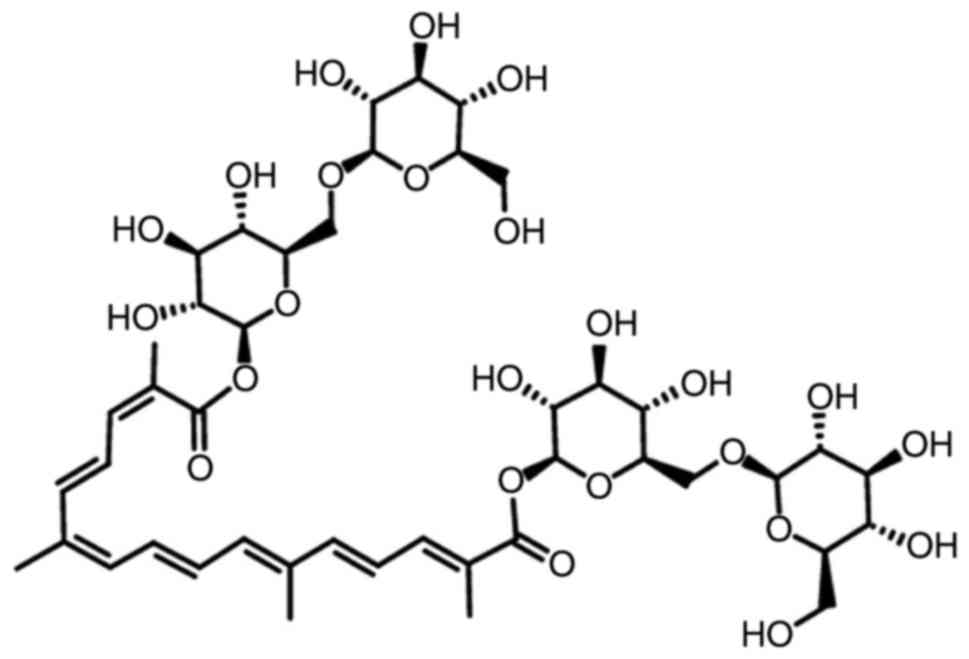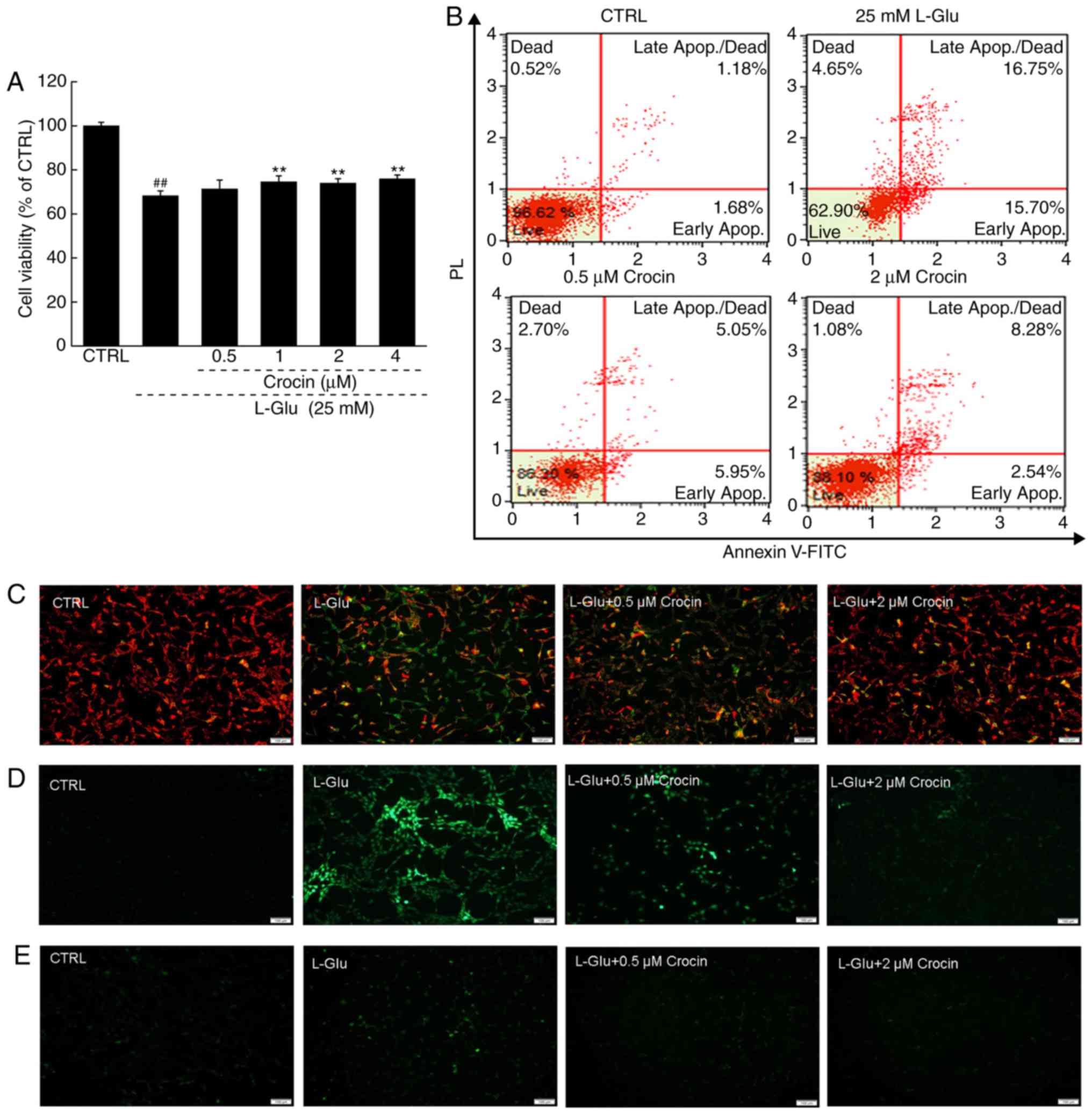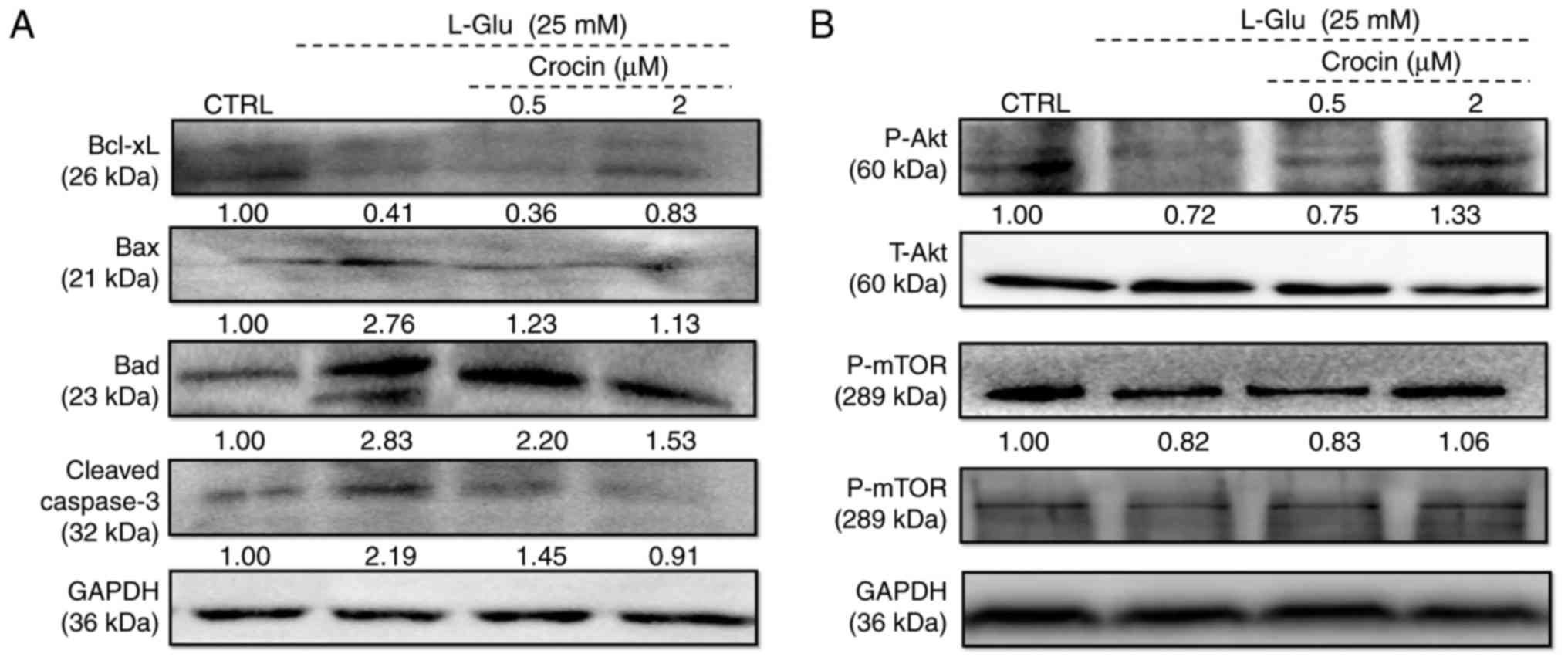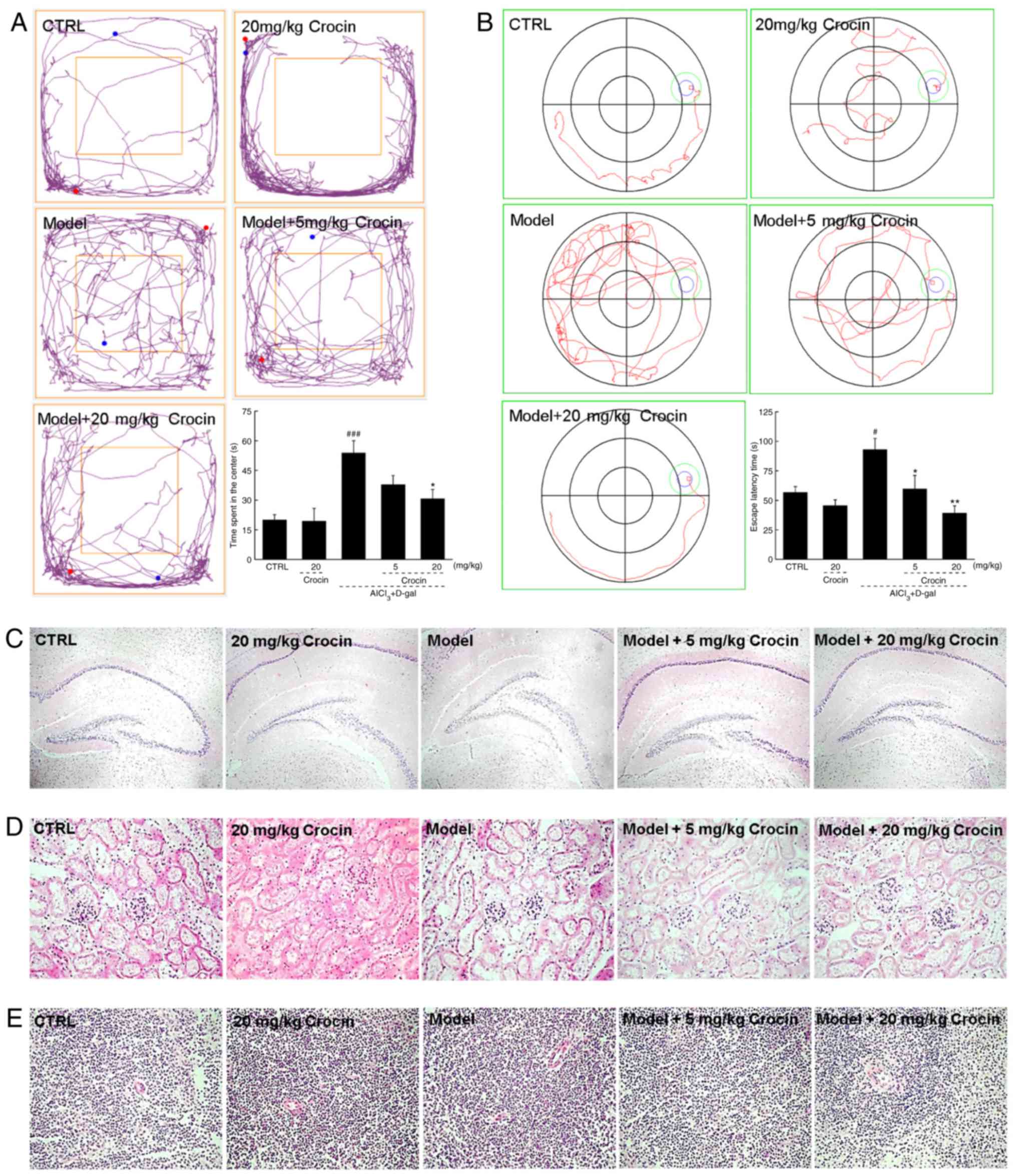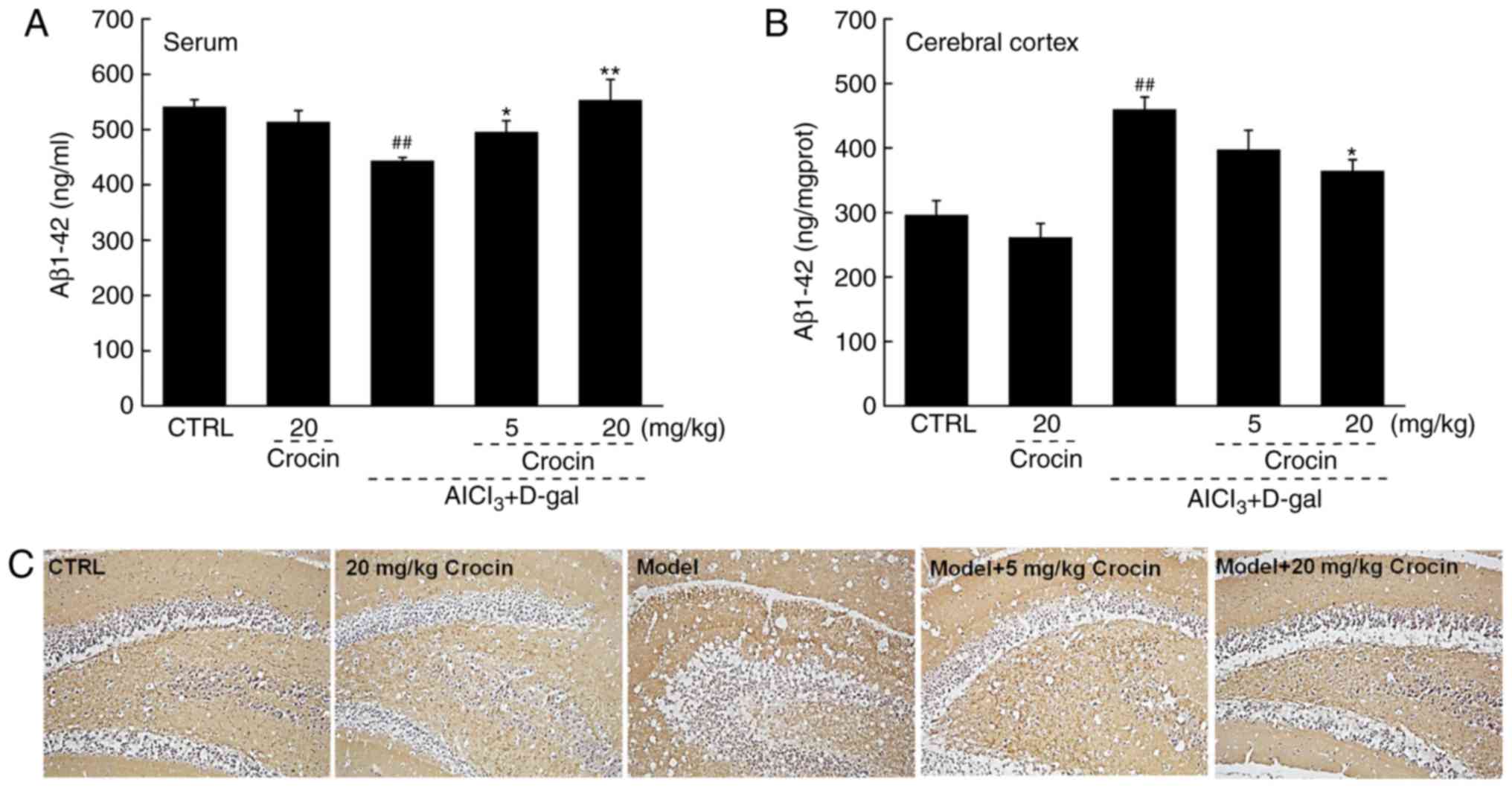|
1
|
Holtzman DM, Morris JC and Goate AM:
Alzheimer’s disease: The challenge of the second century. Sci
Transl Med. 3:77sr712011. View Article : Google Scholar
|
|
2
|
Chen Z and Zhong C: Oxidative stress in
Alzheimer’s disease. Neurosci Bull. 30:271–281. 2014. View Article : Google Scholar : PubMed/NCBI
|
|
3
|
Mines MA, Beurel E and Jope RS: Regulation
of cell survival mechanisms in Alzheimer’s disease by glycogen
synthase kinase-3. Int J Alzheimers Dis. 2011:8610722011.
|
|
4
|
Daulatzai MA: Cerebral hypoperfusion and
glucose hypo-metabolism: Key pathophysiological modulators promote
neurodegeneration, cognitive impairment, and Alzheimer’s disease. J
Neurosci Res. 95:943–972. 2017. View Article : Google Scholar
|
|
5
|
Tyagi N, Ovechkin AV, Lominadze D, Moshal
KS and Tyagi SC: Mitochondrial mechanism of microvascular
endothelial cells apoptosis in hyperhomocysteinemia. J Cell
Biochem. 98:1150–1162. 2006. View Article : Google Scholar : PubMed/NCBI
|
|
6
|
Liu X, Wang J, Lu C, Zhu C, Qian B, Li Z,
Liu C, Shao J and Yan J: The role of lysosomes in BDE 47-mediated
activation of mitochondrial apoptotic pathway in HepG2 cells.
Chemosphere. 124:10–21. 2015. View Article : Google Scholar
|
|
7
|
Luo P, Fei F, Zhang L, Qu Y and Fei Z: The
role of glutamate receptors in traumatic brain injury: Implications
for postsynaptic density in pathophysiology. Brain Res Bull.
85:313–320. 2011. View Article : Google Scholar : PubMed/NCBI
|
|
8
|
McDade E and Bateman RJ: Stop alzheimer’s
before it starts. Nature. 547:153–155. 2017. View Article : Google Scholar : PubMed/NCBI
|
|
9
|
Querfurth HW and LaFerla FM: Alzheimer’s
disease. N Engl J Med. 362:329–344. 2010. View Article : Google Scholar : PubMed/NCBI
|
|
10
|
Jesky R and Hailong C: Are herbal
compounds the next frontier for alleviating learning and memory
impairments? An integrative look at memory, dementia and the
promising therapeutics of traditional chinese medicines. Phytother
Res. 25:1105–1118. 2011. View Article : Google Scholar : PubMed/NCBI
|
|
11
|
Man SC, Chan KW, Lu JH, Durairajan SS, Liu
LF and Li M: Systematic review on the efficacy and safety of herbal
medicines for vascular dementia. Evid Based Complement Alternat
Med. 2012:4262152012. View Article : Google Scholar : PubMed/NCBI
|
|
12
|
Ochiai T, Soeda S, Ohno S, Tanaka H,
Shoyama Y and Shimeno H: Crocin prevents the death of PC-12 cells
through sphingomyelinase-ceramide signaling by increasing
glutathione synthesis. Neurochem Int. 44:321–330. 2004. View Article : Google Scholar
|
|
13
|
Vahdati Hassani F, Naseri V, Razavi BM,
Mehri S, Abnous K and Hosseinzadeh H: Antidepressant effects of
crocin and its effects on transcript and protein levels of CREB,
BDNF, and VGF in rat hippocampus. Daru. 22:16–25. 2014. View Article : Google Scholar : PubMed/NCBI
|
|
14
|
Essa MM, Vijayan RK, Castellano-Gonzalez
G, Memon MA, Braidy N and Guillemin GJ: Neuroprotective effect of
natural products against Alzheimer’s disease. Neurochem Res.
37:1829–1842. 2012. View Article : Google Scholar : PubMed/NCBI
|
|
15
|
Qi Y, Chen L, Zhang L, Liu WB, Chen XY and
Yang XG: Crocin prevents retinal ischaemia/reperfusion
injury-induced apoptosis in retinal ganglion cells through the
PI3K/AKT signalling pathway. Exp Eye Res. 107:44–51. 2013.
View Article : Google Scholar
|
|
16
|
Ochiai T, Ohno S, Soeda S, Tanaka H,
Shoyama Y and Shimeno H: Crocin prevents the death of rat
pheochromyctoma (PC-12) cells by its antioxidant effects stronger
than those of alpha-tocopherol. Neurosci Lett. 362:61–64. 2004.
View Article : Google Scholar : PubMed/NCBI
|
|
17
|
Heidari S, Mehri S and Hosseinzadeh H:
Memory enhancement and protective effects of crocin against
d-galactose aging model in the hippocampus of Wistar rats. Iran J
Basic Med Sci. 20:1250–1259. 2017.
|
|
18
|
Baghishani F, Mohammadipour A,
Hosseinzadeh H, Hosseini M and Ebrahimzadeh-Bideskan A: The effects
of tramadol administration on hippocampal cell apoptosis, learning
and memory in adult rats and neuroprotective effects of crocin.
Metab Brain Dis. 33:907–916. 2018. View Article : Google Scholar : PubMed/NCBI
|
|
19
|
Wang D, Li S, Chen J, Liu L and Zhu X: The
effects of astilbin on cognitive impairments in a transgenic mouse
model of Alzheimer’s disease. Cell Mol Neurobiol. 37:695–706. 2017.
View Article : Google Scholar
|
|
20
|
Zhang X, Chen Y, Cai G, Li X and Wang D:
Carnosic acid induces apoptosis of hepatocellular carcinoma cells
via ROS-mediated mitochondrial pathway. Chem Biol Interact.
277:91–100. 2017. View Article : Google Scholar : PubMed/NCBI
|
|
21
|
Ravindran S, Swaminathan K, Ramesh A and
Kurian GA: Nicorandil attenuates neuronal mitochondrial dysfunction
and oxidative stress associated with murine model of vascular
calcification. Acta Neurobiol Exp (Wars). 77:57–67. 2017.
|
|
22
|
Valko M, Leibfritz D, Moncol J, Cronin MT,
Mazur M and Telser J: Free radicals and antioxidants in normal
physiological functions and human disease. Int J Biochem Cell Biol.
39:44–84. 2007. View Article : Google Scholar
|
|
23
|
Kritis AA, Stamoula EG, Paniskaki KA and
Vavilis TD: Researching glutamate-induced cytotoxicity in different
cell lines: A comparative/collective analysis/study. Front Cell
Neurosci. 9:912015. View Article : Google Scholar
|
|
24
|
Peña-Blanco A and García-Sáez AJ: Bax, Bak
and beyond-mitochondrial performance in apoptosis. FEBS J.
285:416–431. 2018. View Article : Google Scholar
|
|
25
|
Heras-Sandoval D, Pérez-Rojas JM,
Hernández-Damián J and Pedraza-Chaverri J: The role of
PI3K/AKT/mTOR pathway in the modulation of autophagy and the
clearance of protein aggregates in neurodegeneration. Cell Signal.
26:2694–2701. 2014. View Article : Google Scholar : PubMed/NCBI
|
|
26
|
Brandeis R, Brandys Y and Yehuda S: The
use of the Morris Water Maze in the study of memory and learning.
Int J Neurosci. 48:29–69. 1989. View Article : Google Scholar : PubMed/NCBI
|
|
27
|
Butterfield DA, Drake J, Pocernich C and
Castegna A: Evidence of oxidative damage in Alzheimer’s disease
brain: Central role for amyloid beta-peptide. Trends Mol Med.
7:548–554. 2001. View Article : Google Scholar : PubMed/NCBI
|
|
28
|
Yamini P, Ray RS and Chopra K: Vitamin D3
attenuates cognitive deficits and neuroinflammatory responses in
ICV-STZ induced sporadic Alzheimer’s disease. Inflammopharmacology.
26:39–55. 2018. View Article : Google Scholar
|
|
29
|
Tönnies E and Trushina E: Oxidative
stress, synaptic dysfunction, and Alzheimer’s disease. J Alzheimers
Dis. 57:1105–1121. 2017. View Article : Google Scholar
|
|
30
|
Xu T, Niu C, Zhang X and Dong M:
β-Ecdysterone protects SH-SY5Y cells against beta-amyloid-induced
apoptosis via c-Jun N-terminal kinase- and Akt-associated
complementary pathways. Lab Invest. 98:489–499. 2018. View Article : Google Scholar : PubMed/NCBI
|
|
31
|
Koh CH, Whiteman M, Li QX, Halliwell B,
Jenner AM, Wong BS, Laughton KM, Wenk M, Masters CL, Beart PM, et
al: Chronic exposure to U18666A is associated with oxidative stress
in cultured murine cortical neurons. J Neurochem. 98:1278–1289.
2006. View Article : Google Scholar : PubMed/NCBI
|
|
32
|
Prasansuklab A, Meemon K, Sobhon P and
Tencomnao T: Ethanolic extract of Streblus asper leaves protects
against glutamate-induced toxicity in HT22 hippocampal neuronal
cells and extends lifespan of Caenorhabditis elegans. BMC
Complement Altern Med. 17:5512017. View Article : Google Scholar : PubMed/NCBI
|
|
33
|
Hung CH, Cheng SS, Cheung YT, Wuwongse S,
Zhang NQ, Ho YS, Lee SM and Chang RC: A reciprocal relationship
between reactive oxygen species and mitochondrial dynamics in
neurodegeneration. Redox Biol. 14:7–19. 2018. View Article : Google Scholar
|
|
34
|
Park HS, Cho HS and Kim TW: Physical
exercise promotes memory capability by enhancing hippocampal
mitochondrial functions and inhibiting apoptosis in obesity-induced
insulin resistance by high fat diet. Metab Brain Dis. 33:283–292.
2018. View Article : Google Scholar
|
|
35
|
Xu D and Peng Y: Apolipoprotein E 4
triggers multiple pathway-mediated Ca2+ overload, causes CaMK II
phosphorylation abnormity and aggravates oxidative stress caused
cerebral cortical neuron damage. Eur Rev Med Pharmaco.
21:5717–5728. 2017.
|
|
36
|
Fan LF, He PY, Peng YC, Du QH Ma YJ, Jin
JX, Xu HZ, Li JR, Wang ZJ, Cao SL, et al: Mdivi-1 ameliorates early
brain injury after subarachnoid hemorrhage via the suppression of
inflammation-related blood-brain barrier disruption and endoplasmic
reticulum stress-based apoptosis. Free Radic Biol Med. 112:336–349.
2017. View Article : Google Scholar : PubMed/NCBI
|
|
37
|
Tong YN, Bai L, Gong R, Chuan JL, Duan XM
and Zhu YX: Shikonin protects PC12 cells against β-amyloid
peptide-induced cell injury through antioxidant and antiapoptotic
activities. Sci Rep. 8:262018. View Article : Google Scholar
|
|
38
|
Wang X, Wu J, Yu C, Tang Y, Liu J, Chen H,
Jin B, Mei Q, Cao S and Qin D: Lychee seed saponins improve
cognitive function and prevent neuronal injury via inhibiting
neuronal apoptosis in a rat model of Alzheimer’s disease.
Nutrients. 9:E1052017. View Article : Google Scholar
|
|
39
|
Chen JX and Yan SD: Pathogenic role of
mitochondrial [correction of mitochondral] amyloid-beta peptide.
Expert Rev Neurother. 7:1517–1525. 2007. View Article : Google Scholar : PubMed/NCBI
|
|
40
|
Wang D, Guo TQ, Wang ZY, Lu JH, Liu DP,
Meng QF, Xie J, Zhang XL, Liu Y and Teng LS: ERKs and
mitochondria-related pathways are essential for glycyrrhizic
acid-mediated neuropro-tection against glutamate-induced toxicity
in differentiated PC12 cells. Braz J Med Biol Res. 47:773–779.
2014. View Article : Google Scholar : PubMed/NCBI
|
|
41
|
Hu S, Wang D, Zhang J, Du M, Cheng Y, Liu
Y, Zhang N, Wang D and Wu Y: Mitochondria related pathway is
essential for polysaccharides purified from Sparassis crispa
mediated neuro-protection against glutamate-induced toxicity in
differentiated PC12 cells. Int J Mol Sci. 17:E1332016. View Article : Google Scholar : PubMed/NCBI
|
|
42
|
Pourtalebi Jahromi L, Sasanipour Z and
Azadi A: Promising horizon to alleviate Alzeheimer’s disease
pathological hallmarks via inhibiting mTOR signaling pathway: A new
application for a commonplace analgesic. Med Hypotheses.
110:120–124. 2018. View Article : Google Scholar : PubMed/NCBI
|
|
43
|
Laplante M and Sabatini DM: mTOR signaling
at a glance. J Cell Sci. 122:3589–3594. 2009. View Article : Google Scholar : PubMed/NCBI
|
|
44
|
Zhang J, Wang X, Vikash V, Ye Q, Wu D, Liu
Y and Dong W: ROS and ROS-mediated cellular signaling. Oxid Med
Cell Longev. 2016:43509652016. View Article : Google Scholar : PubMed/NCBI
|
|
45
|
Lu J, Zheng YL, Luo L, Wu DM, Sun DX and
Feng YJ: Quercetin reverses d-galactose induced neurotoxicity in
mouse brain. Behav Brain Res. 171:251–260. 2006. View Article : Google Scholar : PubMed/NCBI
|
|
46
|
Praticò D, Uryu K, Sung S, Tang S,
Trojanowski JQ and Lee VM: Aluminum modulates brain amyloidosis
through oxidative stress in APP transgenic mice. FASEB J.
16:1138–1140. 2002. View Article : Google Scholar : PubMed/NCBI
|
|
47
|
Xiao F, Li XG, Zhang XY, Hou JD, Lin LF,
Gao Q and Luo HM: Combined administration of d-galactose and
aluminium induces Alzheimer-like lesions in brain. Neurosci Bull.
27:143–155. 2011. View Article : Google Scholar : PubMed/NCBI
|
|
48
|
Kumar A, Dogra S and Prakash A: Protective
effect of curcumin (Curcuma longa), against aluminium toxicity:
Possible behavioral and biochemical alterations in rats. Behav
Brain Res. 205:384–390. 2009. View Article : Google Scholar : PubMed/NCBI
|
|
49
|
Banks WA, Niehoff ML, Drago D and Zatta P:
Aluminum complexing enhances amyloid beta protein penetration of
blood-brain barrier. Brain Res. 1116:215–221. 2006. View Article : Google Scholar : PubMed/NCBI
|
|
50
|
Islam MT: Oxidative stress and
mitochondrial dysfunction-linked neurodegenerative disorders.
Neurol Res. 39:73–82. 2017. View Article : Google Scholar
|
|
51
|
Dey A, Bhattacharya R, Mukherjee A and
Pandey DK: Natural products against Alzheimer’s disease:
Pharmaco-therapeutics and biotechnological interventions.
Biotechnol Adv. 35:178–216. 2017. View Article : Google Scholar : PubMed/NCBI
|
|
52
|
Fei M, Jianghua W, Rujuan M, Wei Z and
Qian W: The relationship of plasma Abeta levels to dementia in
aging individuals with mild cognitive impairment. J Neurol Sci.
305:92–96. 2011. View Article : Google Scholar : PubMed/NCBI
|
|
53
|
Karthivashan G, Ganesan P, Park SY, Kim JS
and Choi DK: Therapeutic strategies and nano-drug delivery
applications in management of ageing Alzheimer’s disease. Drug
Deliv. 25:307–320. 2018. View Article : Google Scholar : PubMed/NCBI
|
|
54
|
Ferreira-Vieira TH, Guimaraes IM, Silva FR
and Ribeiro FM: Alzheimer’s disease: Targeting the Cholinergic
System. Curr Neuropharmacol. 14:101–115. 2016. View Article : Google Scholar :
|
|
55
|
Fu AL, Li Q, Dong ZH, Huang SJ, Wang YX
and Sun MJ: Alternative therapy of Alzheimer’s disease via
supplementation with choline acetyltransferase. Neurosci Lett.
368:258–262. 2004. View Article : Google Scholar : PubMed/NCBI
|
|
56
|
Zhang JY, Jiang H, Gao W, Wu J, Peng K,
Shi YF and Zhang XJ: The JNK/AP1/ATF2 pathway is involved in
H2O2-induced acetylcholinesterase expression during apoptosis. Cell
Mol Life Sci. 65:1435–1445. 2008. View Article : Google Scholar : PubMed/NCBI
|
|
57
|
Lushchekina SV, Kots ED, Novichkova DA,
Petrov KA and Masson P: Role of Acetylcholinesterase in β-Amyloid
aggregation studied by accelerated molecular dynamics.
Bionanoscience. 7:396–402. 2017. View Article : Google Scholar
|
|
58
|
Nitta A, Itoh A, Hasegawa T and Nabeshima
T: beta-Amyloid protein-induced Alzheimer’s disease animal model.
Neurosci Lett. 170:63–66. 1994. View Article : Google Scholar : PubMed/NCBI
|















